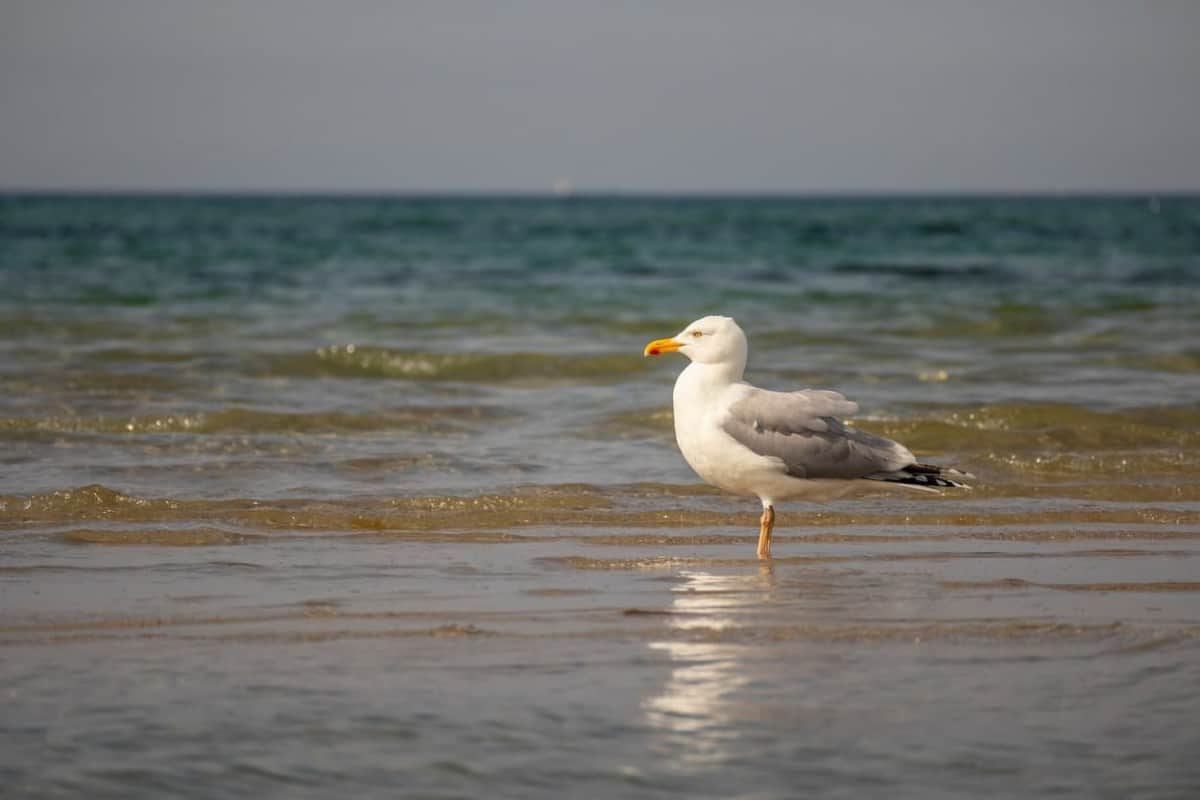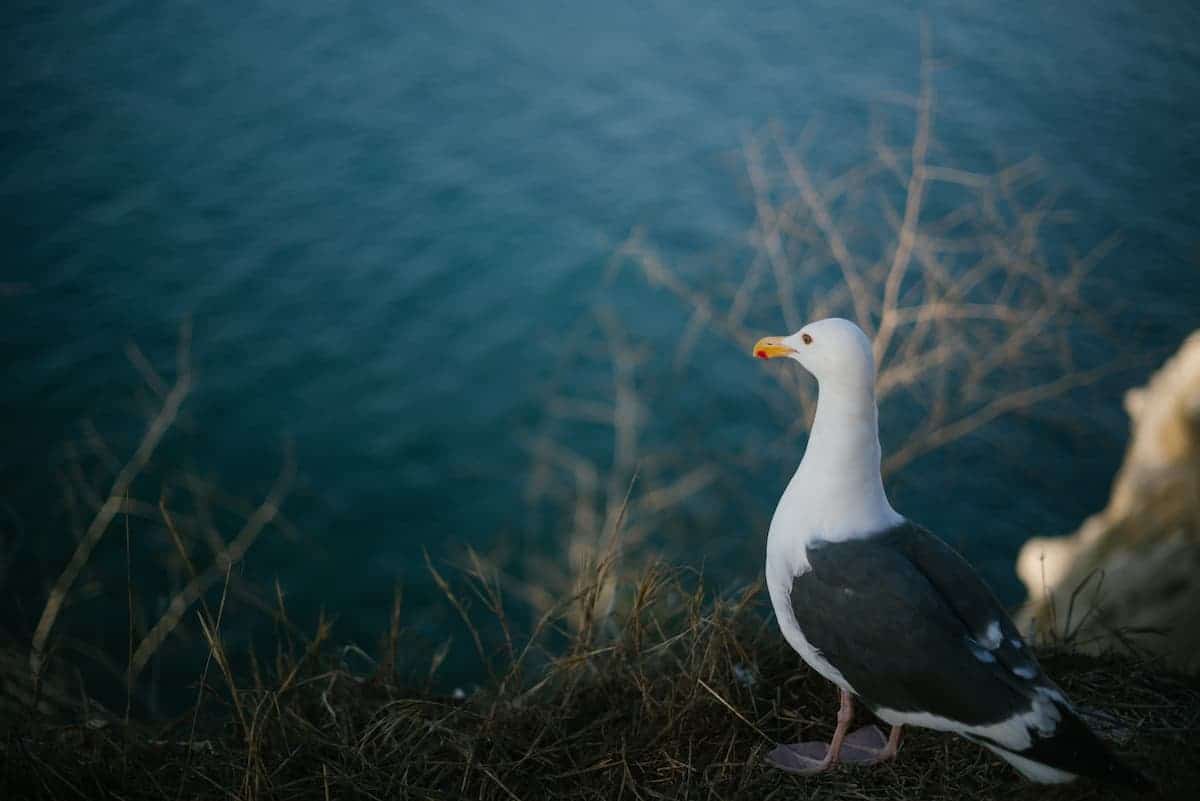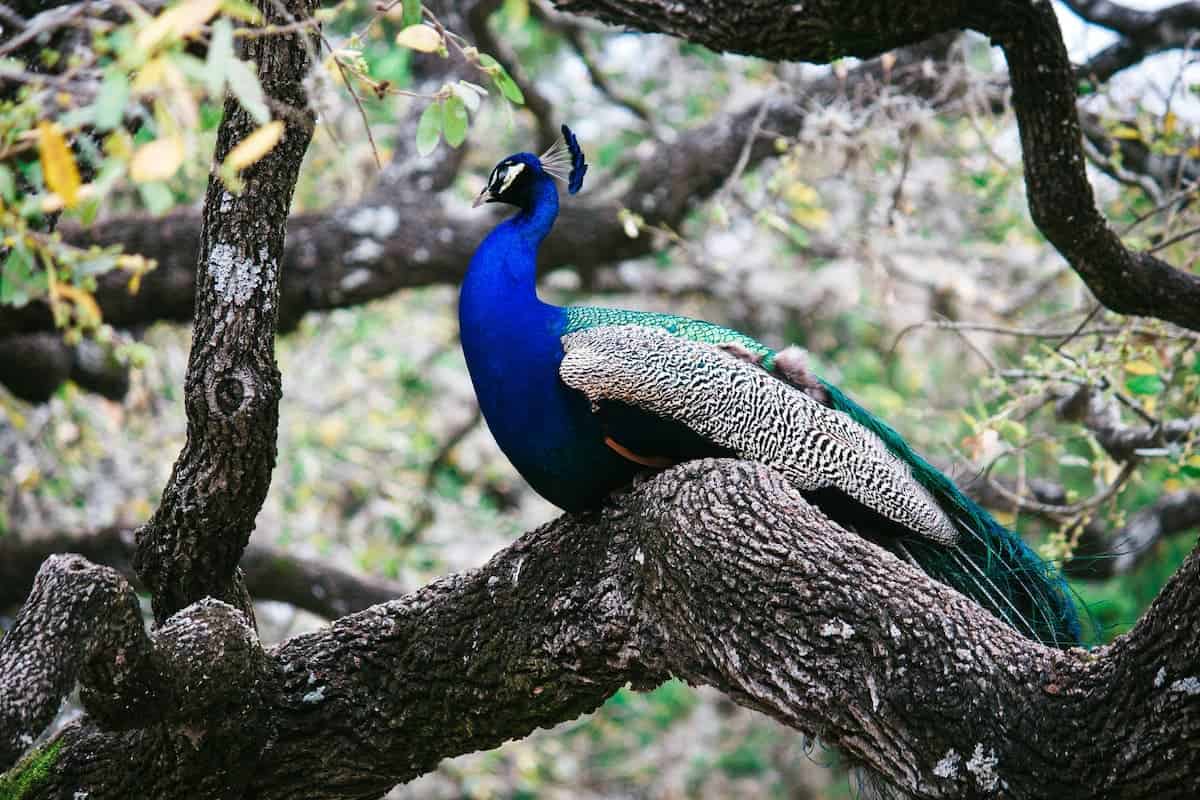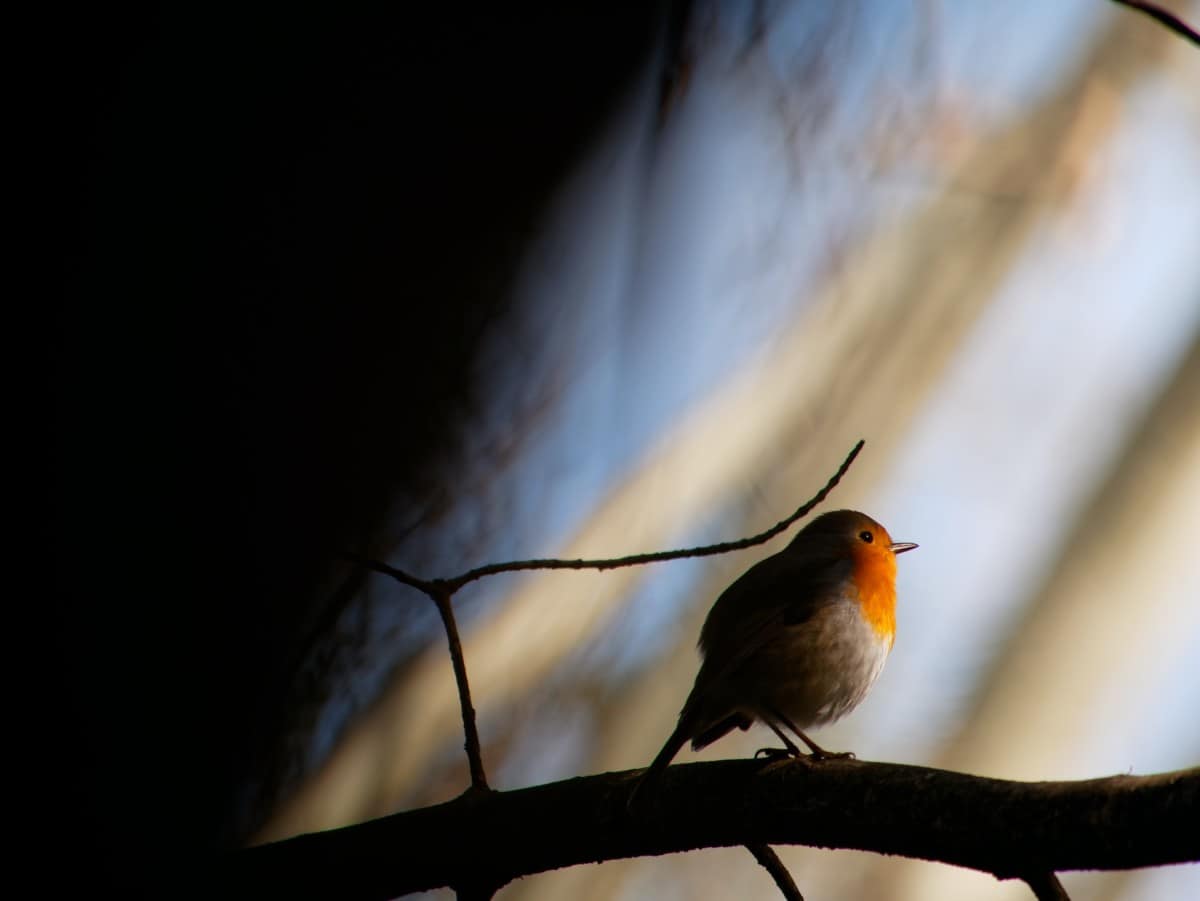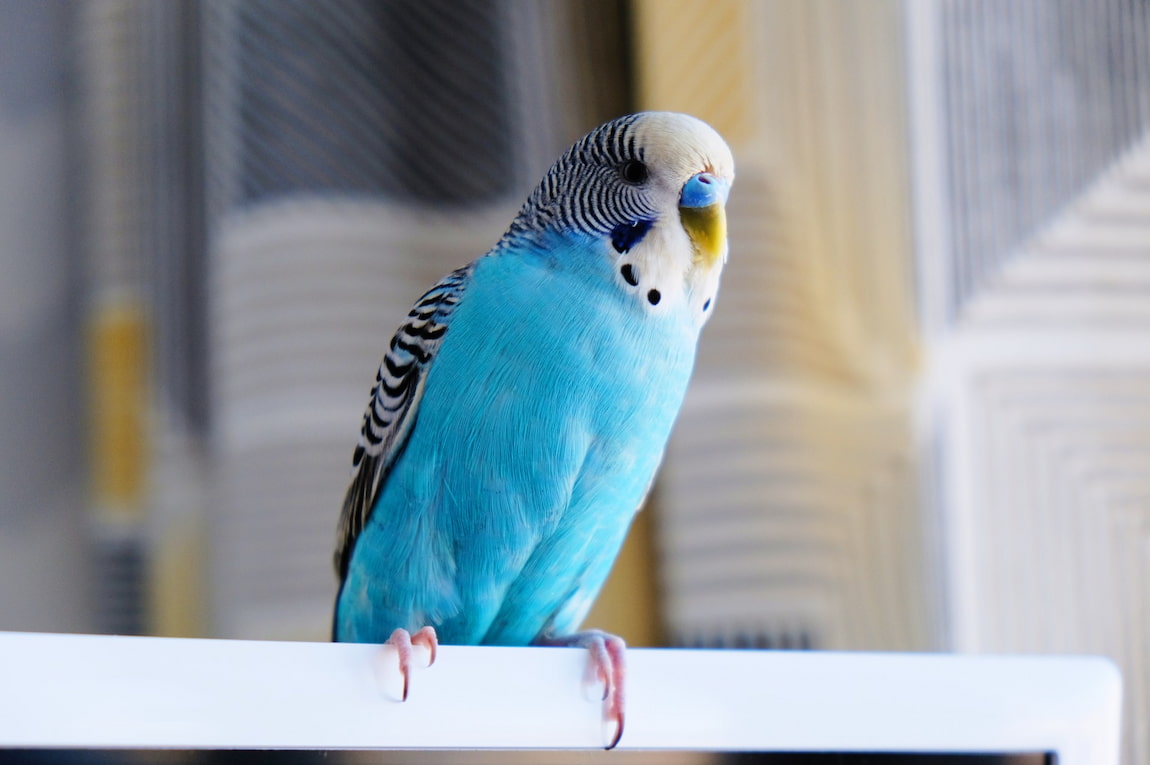If you spend time near the ocean, you may occasionally see seagulls standing motionless on rocks. It turns out that the perching birds are likely sleeping.
As with all animals, seagulls need sleep, but not in the same ways as humans. So, how do seagulls sleep?
Seagulls typically sleep standing up and may tuck their beaks into their feathers to stay warm. They also sleep with their eyes closed. Seagulls look for sleeping areas that are free of predators and noise.
Yet, there is more to the sleep habits of seagulls. Here is a closer look.
Seagulls Sleep Standing On Rocks
Seagulls tend to sleep standing on rocks, fallen trees, and other objects near the open water. They may also stand on objects just below the waterline.
Seagulls tuck their beaks into their feathers when they need to stay warm. Seagulls have two types of feathers. Most of the gull is covered in tough, flexible feathers that protect them from dirt and debris.
The tough feathers only cover certain areas. Between the tracks of tough feathers are down feathers. Down feathers are short and soft. They provide insulation to protect seagulls from extreme weather.
Seagulls sleep with their eyes closed but open them every five to ten minutes. They open their eyes to scan their surroundings and check for predators.
Seagulls Struggle To Perch On Tree Branches
Seagulls can perch on tree branches and other ledged structures, but they cannot lock their feet around the branches in the same way as many other birds. The seagull’s webbed feet are not built for securing their feet to a branch.
Many other species of birds have ligaments and tendons in the legs and feet that help them grasp tree branches. After a bird sits on a branch, it locks one or both feet against the branch. This keeps the bird from falling as they sleep.
As seagulls lack the same foot structure as other birds, they rarely perch on tree branches. They are more likely to stand on a fallen branch near the beach.
Seagulls Sleep Floating In The Water
Seagulls often sleep on land near the water but can also sleep in the water. Some seagulls rest on the water by tucking their legs up to their bellies. They may also tuck their beak into their feathers.
Seagulls choose to sleep on the water to get away from potential land predators, such as:
- Foxes
- Weasels
- Dogs
Falcons, hawks, and other large birds also prey on seagulls. Yet, sharks are the most common predator of seagulls. Depending on which type of predator is more likely to be in the area, seagulls may choose to sleep on the water or land.
Seagulls Sleep When Other Seagulls Sleep
Scientists have monitored the sleeping patterns of seagull colonies and found that they tend to sleep in waves. Seagulls start to sleep when they see other seagulls in the colony sleeping.
With many other species of animals that congregate in large groups, a significant portion of the group stays awake while others rest. This allows members of the group to look out for threats. Seagulls do not behave in the same way.
An entire colony of seagulls may sleep at the same time. Scientists believe that seagulls pay attention to the rest of the flock. If they see other seagulls sleeping, they assume it is safe for them to sleep as well.
Seagulls Can Sleep In The Rain
Seagulls are not deep sleepers, but they can continue to rest in relatively rough conditions, including rain and storms. Seagulls apply wax to their feathers as part of their grooming process. The wax helps to waterproof their feathers.
The feathers are also dense, which helps keep water from penetrating the seagull’s coat. Seagulls may wait for the rain to pass, as their feathers can repel light rain.
If the feathers become too saturated, the seagull may seek shelter. However, seagulls sleeping on the water may choose to ride the waves instead of attempting to fly to dry land. Their wet feathers make flying more difficult. They wait for the waves to carry them to the shore.
Seagulls Use The Sun As An Alarm Clock
Seagulls always wake when the sun rises. Even if a seagull does not get adequate sleep at night, it never sleeps in.
People who live near the sea frequently hear seagulls in the early morning. The sound of a colony of seagulls squawking can reach 70 decibels. For comparison, the typical vacuum cleaner produces about 70 dB of noise.
Baby Seagulls Sleep Laying In The Nest
Baby seagulls do not immediately sleep standing up after birth. They typically lay down on their bellies. However, they start leaving the nest almost immediately. Baby seagull chicks leave the nest within 24 hours but return to it for sleep.
Seagulls start learning to fly at around 45 days and remain with the nest for another three to four weeks. At this point, the sleep habits of the young seagull should match the habits of its parent.
Seagulls Do Not Sleep Through the Night
Seagulls are diurnal, which means they are more active during the day. However, they do not sleep through the entire night. Seagulls fly at night for a variety of reasons, including threats from predators and access to food.
Seagulls that live near big cities may use the bright lights to help scavenge for food. Seagulls may also suddenly awake from their slumber if a predator approaches. They then fly off to another spot to continue their rest.
Where Do Seagulls Sleep
Like many other birds, gulls are not choosy when looking for a place to sleep at night. Ideally, they look for spots to perch away from predators whilst staying sheltered from the elements.
One of the most popular spots for gulls to rest is on the sand bars and sandy shores next to the sea. After all, not many land-based predators will venture to these places.
You can also find gulls sleeping on the harder to reach areas of boats and other seaborne vessels. In fairer weather, the less accessible areas on the decks of boats make for perfect spots for gulls to rest undisturbed.
If you live in a city, you will probably find gulls resting on the outcrops, fixtures and fittings of many buildings. Gulls aren’t particular when it comes to man-made vs natural surroundings, so human buildings make for perfectly safe places for gulls to sleep away from danger.
Want to learn more about Where Do Seagulls Sleep click the button below
Conclusion
Most seagulls sleep standing up on rocks and other solid surfaces or float in the water. They rarely perch on tree branches, as their webbed feet cannot lock onto a branch.
Seagulls often turn their heads back and tuck their beaks into their feathers. As with many other species of birds, seagulls have soft down feathers for insulation.
Seagulls typically choose to sleep when there are no threats, such as predators or poor weather. Unfortunately, they are also early risers and known to wake up people who live near the ocean.
